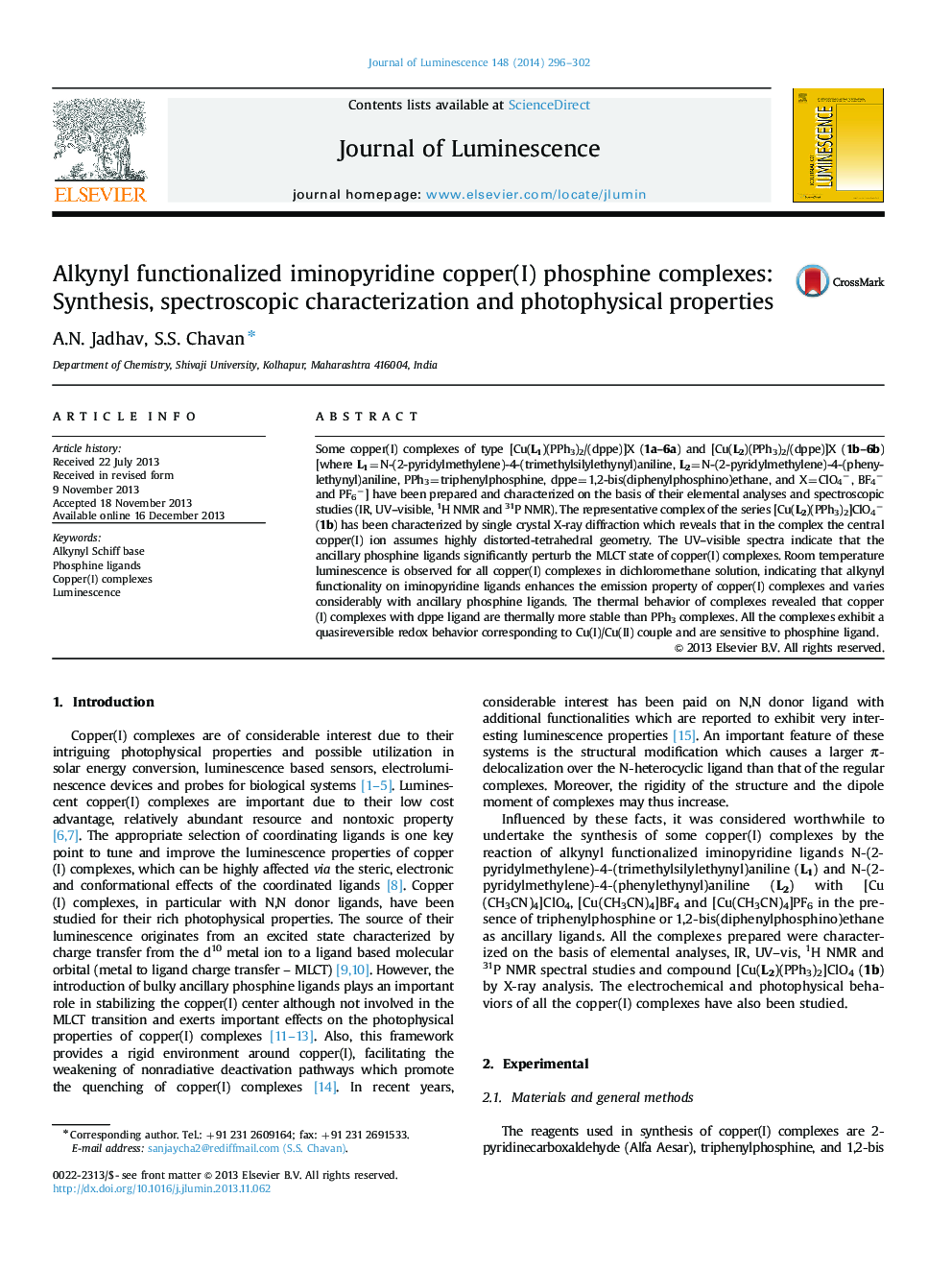| Article ID | Journal | Published Year | Pages | File Type |
|---|---|---|---|---|
| 5400567 | Journal of Luminescence | 2014 | 7 Pages |
Abstract
Some copper(I) complexes of type [Cu(L1)(PPh3)2/(dppe)]X (1a-6a) and [Cu(L2)(PPh3)2/(dppe)]X (1b-6b) [where L1=N-(2-pyridylmethylene)-4-(trimethylsilylethynyl)aniline, L2=N-(2-pyridylmethylene)-4-(phenylethynyl)aniline, PPh3=triphenylphosphine, dppe=1,2-bis(diphenylphosphino)ethane, and X=ClO4â, BF4â and PF6â] have been prepared and characterized on the basis of their elemental analyses and spectroscopic studies (IR, UV-visible, 1H NMR and 31P NMR). The representative complex of the series [Cu(L2)(PPh3)2]ClO4â (1b) has been characterized by single crystal X-ray diffraction which reveals that in the complex the central copper(I) ion assumes highly distorted-tetrahedral geometry. The UV-visible spectra indicate that the ancillary phosphine ligands significantly perturb the MLCT state of copper(I) complexes. Room temperature luminescence is observed for all copper(I) complexes in dichloromethane solution, indicating that alkynyl functionality on iminopyridine ligands enhances the emission property of copper(I) complexes and varies considerably with ancillary phosphine ligands. The thermal behavior of complexes revealed that copper(I) complexes with dppe ligand are thermally more stable than PPh3 complexes. All the complexes exhibit a quasireversible redox behavior corresponding to Cu(I)/Cu(II) couple and are sensitive to phosphine ligand.
Related Topics
Physical Sciences and Engineering
Chemistry
Physical and Theoretical Chemistry
Authors
A.N. Jadhav, S.S. Chavan,
